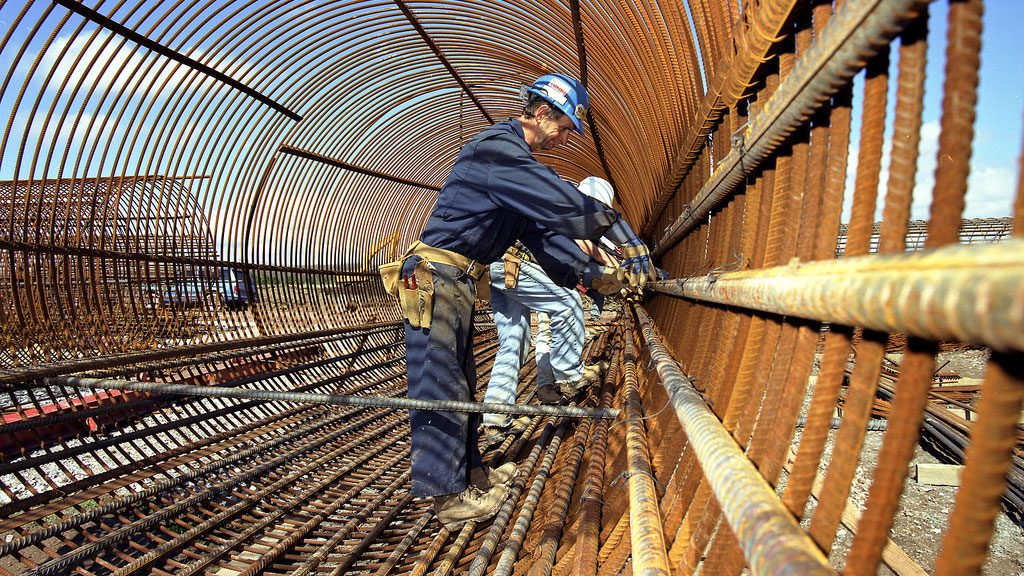Writing thousands of tickets for health and safety violations underlines a commitment to enforcement but it hides a more worrying challenge, says the Ministry of Labour’s Chief Prevention Officer (CPO) Ron Kelusky.
“The overall injury rate of construction is going down,” says Kelusky.
“But clearly just one incident is unacceptable.”
The bigger issue is how to get through the message that safety matters and how to repeat it in a meaningful way to ensure it sticks.
The Top 10 OH&S issues in workplaces remain pretty consistent, though a new list is coming in 2019.
While the biggest infraction cited was workplace violence and harassment (11,662 violations) it wasn’t the big issue in construction which accounted for one to two per cent of the tickets issued.
Fall protection (9,658) remains the top infraction in construction with failure to wear PPE (8,318) a close second — no headgear accounted for about 10 per cent of notices issued.
Improper footwear was at fault in 3.8 per cent of issued tickets.
According to the MOL about 60 per cent of the fall arrest orders were in the residential sector and more than half of them were guardrail-related.
It’s not as though the MOL isn’t working at ramping up awareness.
The highest number of fatalities happened in the first four years of construction employment,
— Ron Kelusky
Ministry of Labour Chief Prevention Officer
Last year they conducted a two-phase Working at Heights initiative which started with an awareness program clearly telling the industry that inspections were coming and then the inspections.
The other most frequently issued orders on construction projects were inadequate training of workers and failure to comply with rules regarding a scaffold platform or other work platform.
Even ladders were improperly deployed in 3.2 per of cases.
Fall protection is the big puzzler since it’s a leading cause of construction site fatalities, especially since the inquest into Metron swing stage collapse of 2009, which killed four and seriously injured another, will convene in 2019, bringing focus back onto working at heights.
The issue isn’t with the national scope contractors like PCL and Ellis Don, which have dedicated safety teams and executives and maintain stellar records, says Kelusky.
“(When it comes to) Fatalities in the construction sector, by far the worst is in residential construction, especially small construction with less than 20 or even less than five employees,” he says.
“We went back quite a few years and found the major cause of fatalities at three to five metres were falling off a roof, off a ladder or down a hole and they either weren’t trained in fall arrest or were trained and weren’t wearing their PPE or were improperly wearing it.”
It’s the little guys he worries about.
The numbers only tell part of the story so far, the Ministry of Labour says in a written response to questions from the Daily Commercial News.
“The top 10 categories refer to the violation legend, which is based on program area input — the four program areas that provided input are Construction, Industrial, Health Care, and Mining,” the MOL responded.
“It was an operational exercise attempt to gain an understanding and summary of different violation themes for orders.”
As such, it’s still a work-in-progress and 2017 was the first time the MOL compiled the list so there’s no list for previous years for comparison.
It is part of what Kelusky calls a science and data based approach to mitigating risk.
“We’re trying to do things differently by working with the various sectors and saying, do you know what the Top 10 causes of injuries are and what critical risks you are dealing with that cause 90 per cent of the fatalities,” he says.
It’s the little things which grab attention.
Failing to wear proper PPE is something that shouldn’t be on the list, certainly not that high up the list.
“It’s their hard hats mostly,” he says.
“They go to lunch or out for a smoke and they don’t put it back on.”
It is simple things like that which raise eyebrows and generate violation notices.
Just having a clear access route made the fourth spot on the list and while not having a Joint Health and Safety Representative isn’t a major issue on union sites, it still comes up as does a lack of OH&S training.
Some facts are obvious and have been for some time and it is construction and industrial sites which remain the most dangerous for workers.
While age is a factor in workplace injuries, it’s more likely that experience — or more accurately inexperience — plays a bigger role.
“I would say that we have a lot of activity in construction and we have people who are new or young coming into it,” he says.
Some are there by design having chosen a career path, he says, but others are perhaps new Canadians who need to put food on the table and whose skills or education aren’t immediately recognized in Canada.
“The analysis we did in terms of numbers found it’s not necessarily the 15 to 24 but the 44- to 54-year-old group and over 54 group. That’s just one segment in factor analysis and we haven’t looked at seniority as a factor but I would couch it was people new to construction being more at risk.”
“The interesting stat we found is that the highest number of fatalities happened in the first four years (of construction employment), in the first year, it accounted for 15 per cent. Clearly there’s an awareness factor.”










Recent Comments